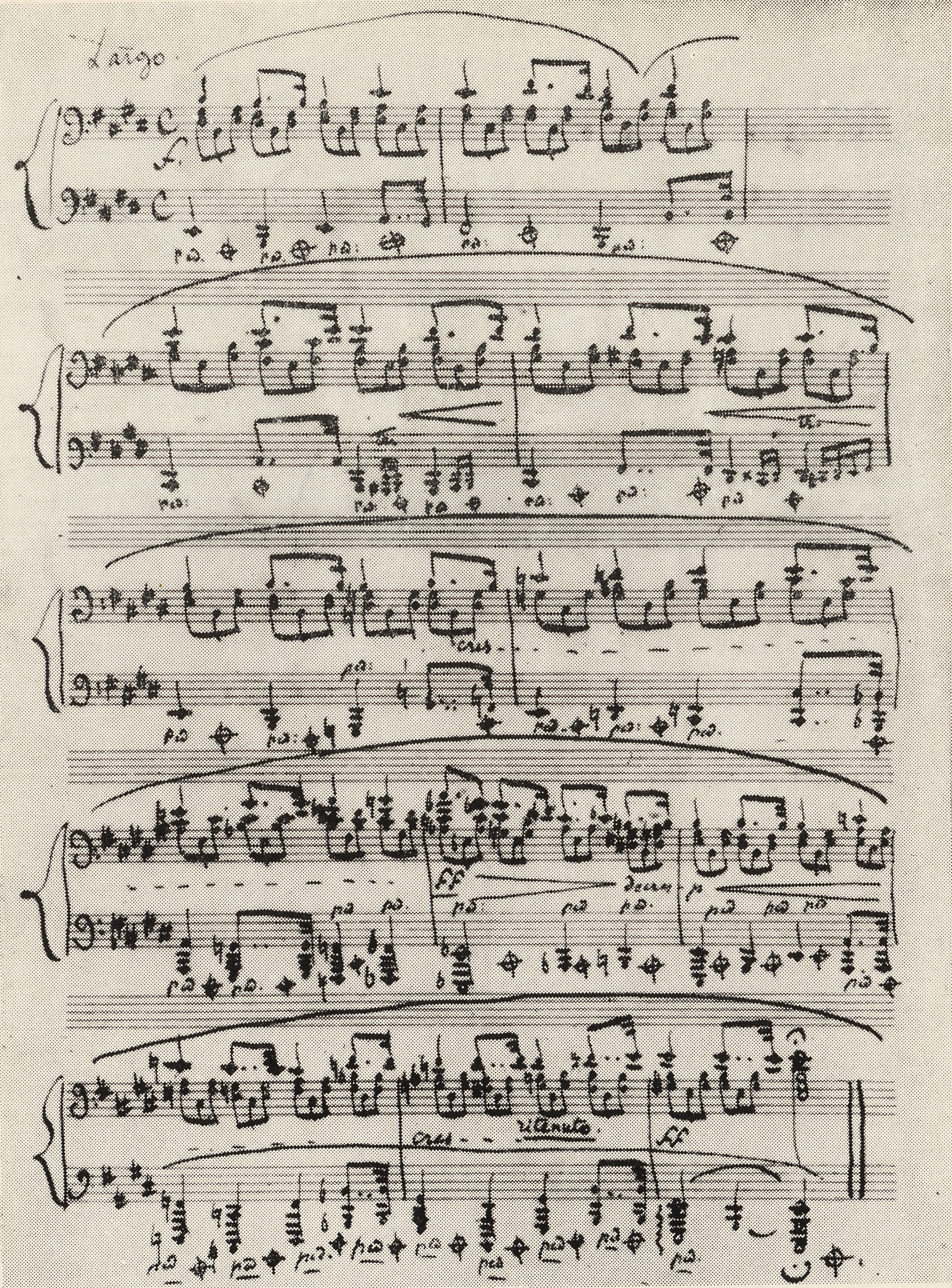Op. 2, Variations in B♭ major
Op. 10, 12 Etudes
Op. 11, Concerto in E minor
Op. 21, Concerto in F minor
Op. 22, Polonaise in E♭ major
Op. 24, 4 Mazurkas
Op. 25, 12 Etudes
Op. 26, 2 Polonaises
Op. 27, 2 Nocturnes
Op. 28, 24 Preludes
Op. 30, 4 Mazurkas
Op. 35, Sonata in B♭ minor
Op. 50, 3 Mazurkas
Op. 63, 3 Mazurkas
Op. 64, 3 Waltzes
(Op. 4), Sonata in C minor




Op. 28 No. 9, Prelude in E major
Complementing the bass line with octaves seems to be advisable due to the shape of the motif (cf. b. 1), repeated in octaves in the next two bars (b. 10-11). The absence of those notes in the sources could have resulted from the limitations of the pianos at Chopin's disposal – their range did not go beyond C1 in the bass register. On the other hand, the absence of octaves can be linked to the  dynamics at the beginning of the crescendo – the fact that Chopin did not dispose of B2 does not have to mean that he wanted to use it. Therefore, the version with octaves can be considered an acceptable variant. Cf. the Scherzo in C
dynamics at the beginning of the crescendo – the fact that Chopin did not dispose of B2 does not have to mean that he wanted to use it. Therefore, the version with octaves can be considered an acceptable variant. Cf. the Scherzo in C Minor, Op. 39, b. 197 and 241.
Minor, Op. 39, b. 197 and 241.
Compare the passage in the sources »
category imprint: Editorial revisions
issues: Constraint from piano range
notation: Pitch



